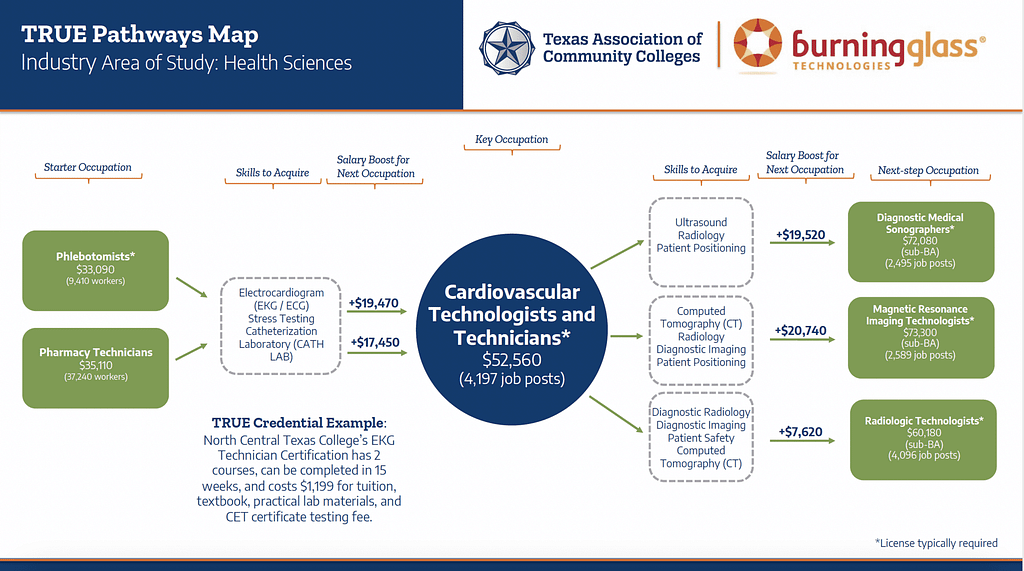Credentials of value 101: Creating best pathways to jobs
In our previous blog on the topic of credentials of value, we recommended that the state look at all available credentials in Texas and determine which are credentials of value so as to maximize students’ options for credentials with proven wage premiums.
This blog explores how the state can use credentials’ linkages with relevant job requirements to further refine the types of credentials recognized in the new formula rewarding credential of value completion. Combined with the value assessment process in our first blog, this will make sure students know not only the potential wages available to them through a credential pathway but also their chances of getting the job associated with those higher wages.
Credential Linkages
A 2015 nationwide analysis of job postings found 8 million jobs where educational requirements arbitrarily ranged from bachelor’s degrees to no degree despite nearly identical job descriptions.
While the minimum value threshold for credentials of value provides insight on wage premiums, it is also important for students to know there is employer demand for their credential. Too often, students pursue a credential only to find that they didn’t need it to get a job. The state can mitigate this issue by prioritizing credentials with proven value to employers.
This can be done by determining how credentials connect to jobs. In particular, credentials should be directly linked with proven employment for specific jobs. This is necessary to ensure that wage premiums are not mistakenly affiliated with certain credentials.
For example, a cybersecurity associate degree graduate who also earned a Microsoft Office certification may become employed as a cybersecurity analyst. In reality, their degree, rather than the certification, was likely the credential desired by their employer.
If the state does not prioritize the cybersecurity degree in its analysis, the Microsoft Office certification could be recognized as an independent credential of value even though it wasn’t the primary credential required by the employer. Determining whether a credential is directly helping individuals get a job would help address this.
The focus on credentials with proven linkages to employment should not, however, come at the detriment of stackable credential pathways, which are sequences of credentials that can be earned over time aligned with the skills needed by an individual to move up a career ladder.
Mapping a career pathway
Many students and workers now intermittently seek education, pursuing higher level programs to reskill or upskill in line with their career path. Consider this pathway map developed by the Texas Association of Community Colleges for cardiovascular technologists and technicians.

These occupations typically require an associate degree for entry. However, it is possible for individuals to start their education pursuing a phlebotomy program that prepares them for the certification exam required to work as a phlebotomist.
Should this certification fail to pass the minimum value threshold to be considered a credential of value, this could cause colleges to de-prioritize their phlebotomy programs — even if the certification serves as a logical prerequisite or credential milestone for a cardiovascular technology associate degree.
As such, it is important for the state to also consider the coherent sequences of credentials as it determines credentials of value. In the case of the stackable phlebotomy credential, there is the added bonus that it is also required for a specific occupation. Not only does it prepare students for further education which can deliver higher wage outcomes, it also provides improved job and wage security for students who may not be able to complete the full associate degree program due to personal circumstances.
Read more:
- Credentials of value 101: What is the minimum value threshold?
- Rethinking community colleges and the workforce of the future
- Understanding HB 8: Building community colleges’ capacity
Love this blog? Support our work.
